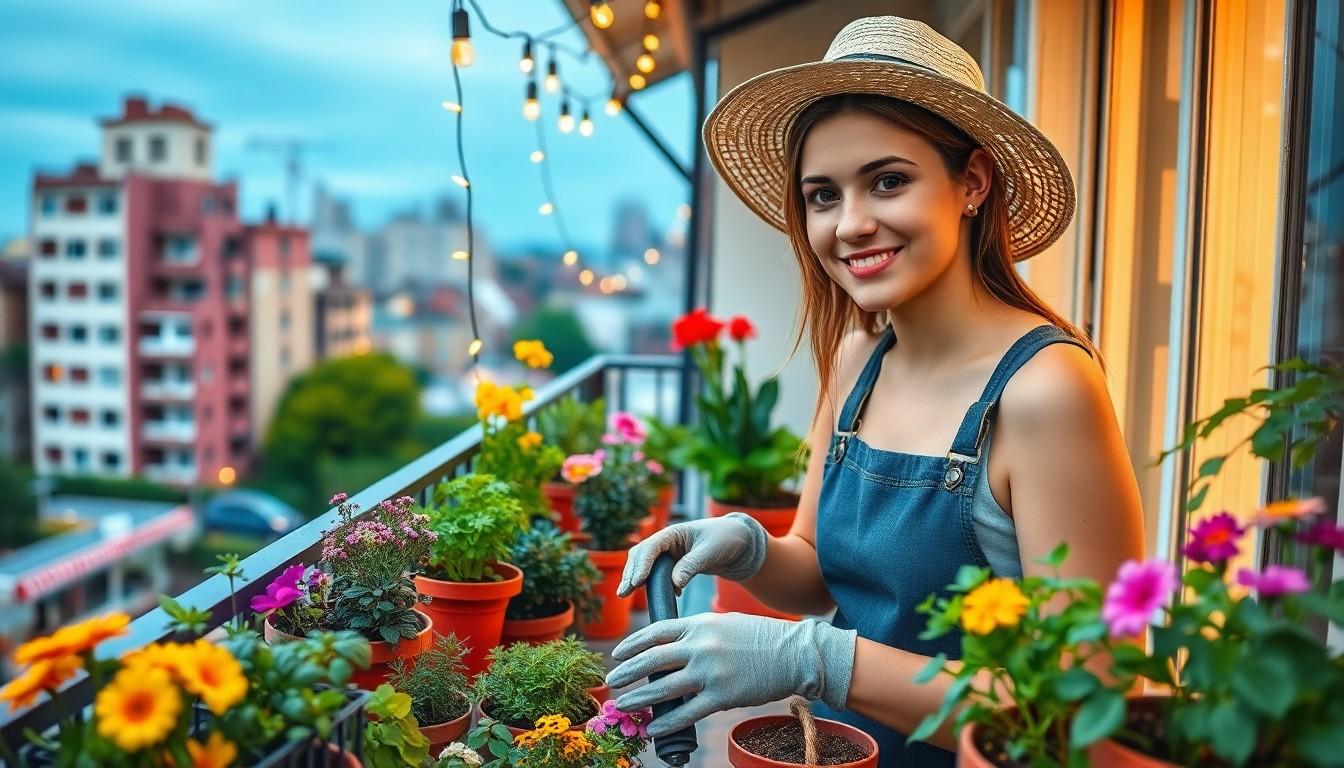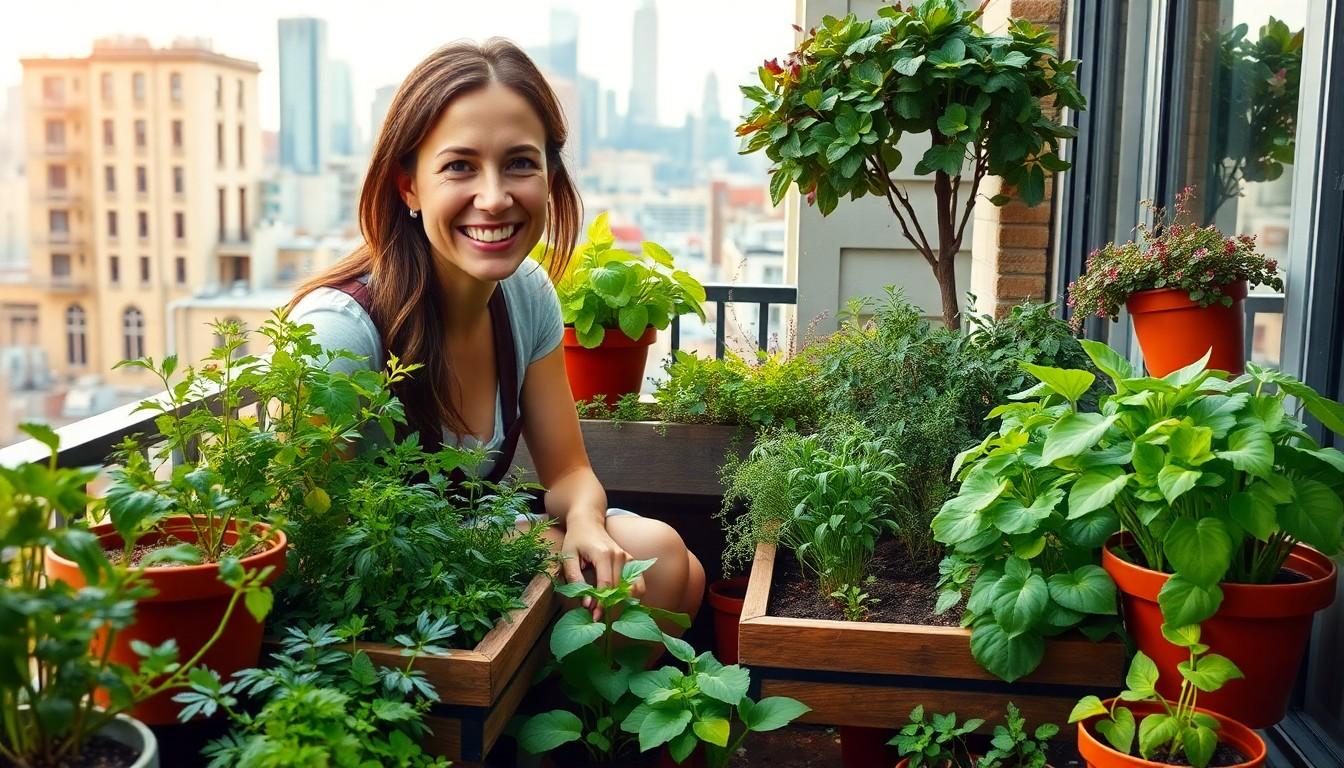Phone:
(701)814-6992
Physical address:
6296 Donnelly Plaza
Ratkeville, Bahamas.

In a world where square footage often comes at a premium, small space gardening proves that you don’t need a sprawling backyard to cultivate a green thumb. Whether it’s a cozy balcony or a tiny windowsill, these pint-sized plots can yield a bounty of fresh herbs, vibrant flowers, and even vegetables that make your neighbors green with envy.
Imagine plucking a ripe tomato just steps away from your kitchen or snipping basil for that perfect pasta dish. With a little creativity and the right techniques, anyone can transform their compact living area into a flourishing oasis. So grab your trowel and get ready to dig into the joys of small space gardening—because who says you can’t grow a garden in a shoebox?
Small space gardening involves cultivating plants in limited areas. Such spaces include balconies, patios, rooftops, and even indoor environments. Creativity plays a crucial role when designing these gardens. Innovative techniques maximize available space, allowing for the growth of herbs, flowers, and vegetables.
Raised beds and container gardening prove effective in optimizing small areas. Vertical gardening techniques, like wall planters or hanging pots, enhance plant density while saving ground space. These methods cater to those who lack traditional yards, offering a solution for urban gardening.
Utilizing native plants often benefits small space gardens. These plants typically require less maintenance, adapting well to their surroundings. Furthermore, small space gardeners can incorporate edible plants to enhance culinary experiences.
Community gardens also provide opportunities for individuals with limited personal space. Participating in shared plots allows access to diverse plant varieties and fosters relationships among neighbors.
Sustainable gardening practices remain essential within small space gardening. Implementing composting and rainwater collection systems recycling kitchen waste and water promotes eco-friendly methods.
The charm of small space gardening lies in its accessibility. With a little planning, anyone can create a beautiful and productive garden. Each plant contributes to a vibrant ecosystem, showcasing the potential of even the smallest areas.

Small space gardening offers numerous advantages for urban dwellers. Its potential to maximize limited areas makes it a viable option for anyone seeking to grow their own plants.
Container gardening and vertical gardening techniques enable efficient use of space. Utilizing raised beds makes planting more accessible, reducing strain on the back. Plants can thrive in small spaces by selecting varieties suited for limited environments. Arranging plants vertically allows for more sunlight exposure, benefiting overall growth. Creative layouts can transform balconies or windowsills into lush green spaces. Diverse planters serve different plant needs and enhance the garden’s aesthetic.
Accessing fresh produce becomes easier through small space gardening. Herbs like basil and cilantro flourish in pots, providing flavors just steps away from the kitchen. Growing vegetables in containers ensures a steady supply of ingredients for healthy meals. Urban dwellers cultivate tasty greens, allowing them to enjoy home-grown flavors year-round. This gardening style promotes food security while reducing reliance on store-bought options. Community gardens foster collaboration, providing additional opportunities to grow fresh produce together.
Small space gardening relies on specific tools to enhance productivity in limited areas. Essential items include containers and appropriate soil.
Containers and planters serve as the foundation for small space gardening. Various types, such as pots, window boxes, and hanging planters, allow flexibility in design. Choose materials like ceramic, plastic, or metal that suit personal taste and space limitations. Selecting the right size is crucial for root development; larger containers promote healthy growth. Stacking planters maximize vertical space, while vertical walls can also host plant pockets. Consider self-watering containers to reduce maintenance. Each option contributes significantly to transforming small spaces into vibrant gardens.
Soil and fertilizers play a vital role in the health of plants grown in small spaces. Quality potting mix provides adequate drainage and aeration, while retaining moisture. Organic fertilizers, like compost or worm castings, enrich soil nutrients and support plant growth. Nutrient imbalances can hinder productivity; thus, regular testing ensures proper soil condition. Organic options are preferred for sustainability, minimizing chemical exposure. Fertilizer application should occur every few weeks during the growing season. By paying attention to soil quality, gardeners can support thriving plants in confined areas.
Small space gardening thrives on selecting the right plants. Choosing suitable varieties maximizes yield and aesthetic appeal in confined areas.
Consider planting compact vegetables like cherry tomatoes and radishes. Both grow well in containers and provide fresh produce. Herbs such as basil and parsley adapt easily to small spaces, adding flavor to meals. Peppers, particularly dwarf varieties, offer vibrant color and taste without occupying much space. Combining deep pots can accommodate root systems while enhancing growth. Opting for vertical planters allows efficient use of space, ensuring ample sunlight reaches each plant.
Various flowers flourish in small areas, enhancing aesthetics. Petunias and marigolds remain popular choices for their vibrant colors and hardiness. Incorporating trailing plants like sweet potato vine can create visual interest on balconies or patios. Succulents work well in limited spaces due to their low maintenance needs. Grouping plants by height establishes an eye-catching display while maximizing space. Remember that even small areas can become lush with the right combinations of colors and textures.
Small space gardening requires innovative techniques to maximize every inch available. Effectively utilizing methods like vertical gardening and container gardening enhances space efficiency.
Vertical gardening offers a smart solution for limited areas. Utilizing trellises, wall planters, or hanging pots, individuals can grow a variety of plants upward instead of outward. This method optimizes sunlight exposure while conserving ground space. Many choose to cultivate climbing plants like cucumbers or peas, which thrive in vertical setups. Incorporating wall-mounted planters filled with herbs or flowers can create eye-catching displays. Designers frequently emphasize the use of recycled materials for added sustainability, making this approach both eco-friendly and practical. Additionally, vertical gardening not only creates visual interest but can improve air circulation around plants, promoting healthier growth.
Container gardening provides a versatile way to plant in small spaces. People leverage various container sizes, including pots, window boxes, and hanging baskets, to create gardens on balconies, patios, or even windowsills. Designers often suggest using lightweight materials for easy mobility, allowing for flexible arrangements. Herbs such as mint, thyme, and basil flourish in containers, making them ideal for culinary gardens. Many urban dwellers appreciate the ability to grow vegetables like lettuce or dwarf varieties of peppers without dedicated garden beds. Proper soil selection plays a crucial role in plant health, so using high-quality potting mix ensures optimal growth. Planting in containers not only maximizes space but also enhances accessibility, enabling individuals to care for their plants easily.
Small space gardening unlocks the potential for anyone to cultivate their own green oasis regardless of the size of their living area. With a bit of creativity and the right techniques, even the tiniest balconies or windowsills can flourish with life.
By embracing methods like vertical gardening and container planting, individuals can enjoy fresh produce and vibrant flowers without needing a traditional garden. Additionally, community gardens offer a chance to connect with neighbors while sharing the joys of gardening.
Ultimately, small space gardening not only enhances personal spaces but also contributes to a sustainable lifestyle, making it an enriching endeavor for urban dwellers everywhere.